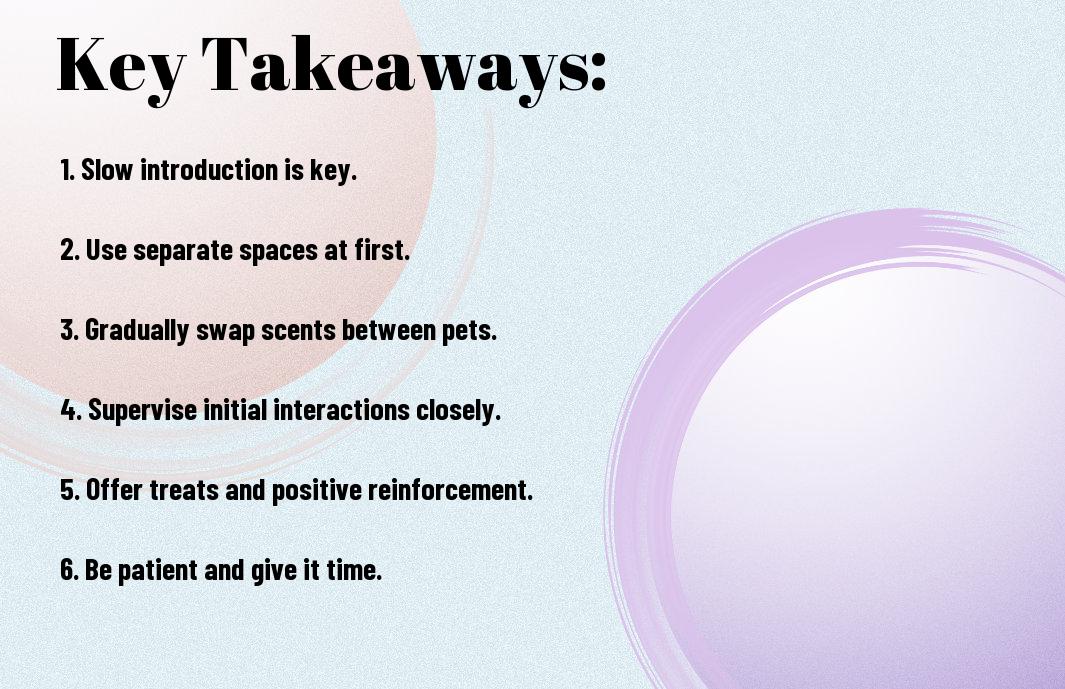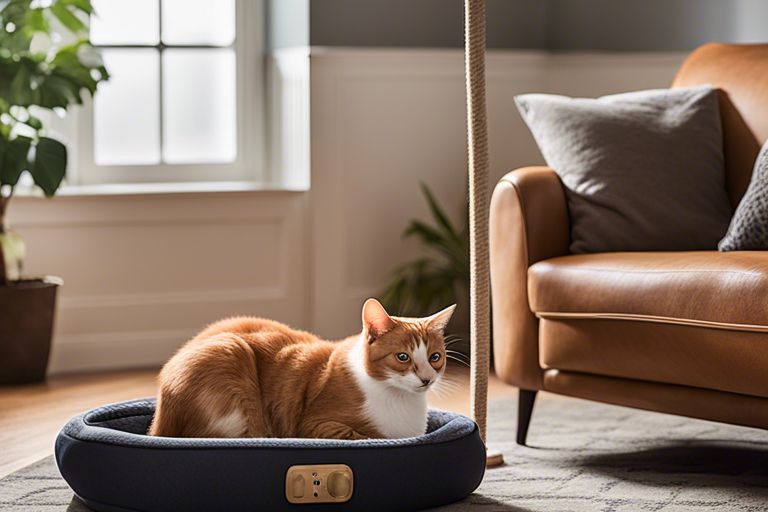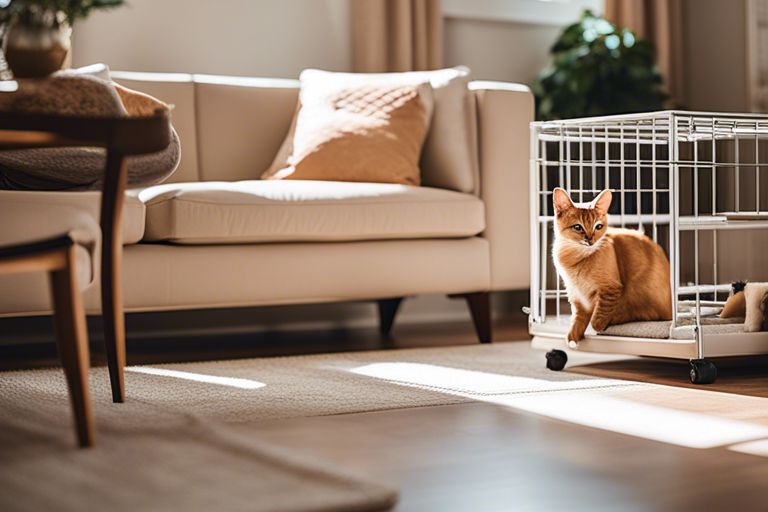Introducing a new cat to your existing pets can be a challenging and delicate process. It is important to take the necessary precautions to ensure a smooth and peaceful integration. Not doing so can lead to fighting, aggression, and stress for your pets. However, with the right approach and patience, you can help your pets adjust to the new addition and create a harmonious household. In this blog post, we will provide you with practical tips and advice on how to introduce a new cat to your existing pets.
Key Takeaways:
- Gradual introduction: Introduce the new cat to your existing pets slowly, allowing them to get used to each other’s scents and presence over time.
- Separate spaces: Provide separate spaces for each pet initially, such as separate rooms or areas of the house, to prevent conflict and allow for gradual adjustment.
- Supervised interactions: Monitor the interactions between the new cat and your existing pets closely, especially during the initial stages of introduction to prevent any aggressive behavior.
- Positive reinforcement: Use treats and praise to encourage positive interactions between the pets, rewarding them for good behavior towards each other.
- Patience: Be patient and understanding throughout the process, as it may take time for the pets to adjust to each other’s presence and establish a harmonious relationship.


Preparing for the Arrival of a New Cat
If you are considering introducing a new cat to your existing pets, it is important to prepare your home and your other pets for the new addition. This will help to ensure a smooth and stress-free transition for everyone involved. There are several key steps you can take to prepare for the arrival of a new cat, including creating a safe space and gathering necessary supplies.
Creating a Safe Space
When bringing a new cat into your home, it is essential to create a safe space where the cat can retreat to if they feel overwhelmed or scared. This could be a spare room or a quiet corner of your house. Set up a cozy bed, litter box, food and water bowls, and some toys in this space. Make sure your other pets do not have access to this area initially, as it will allow the new cat to adjust to their new surroundings at their own pace.
Gathering Necessary Supplies
In preparation for the arrival of your new cat, make sure you have all the necessary supplies on hand. This includes a litter box, litter, food and water bowls, high-quality cat food, scratching posts, toys, and a comfortable bed. Having these supplies ready will ensure that your new cat has everything they need to feel at home from the moment they arrive. Additionally, it will help to prevent any unnecessary stress or discomfort for both the new cat and your existing pets. Remember, it is important to have separate supplies for each pet to reduce the risk of territorial behavior and conflict.
Introducing a new cat to your existing pets can be a delicate process, but with the right approach, it can be a smooth transition for everyone involved. It is important to take your time and be patient, as rushing the introduction can lead to aggression and territorial issues. By following a gradual and controlled introduction plan, you can help your pets form positive relationships and coexist peacefully. In this blog post, we will provide you with proven tips and strategies to help you successfully introduce a new cat to your existing pets.

Building Lasting Bonds Between Pets
Your first priority when introducing a new cat to your existing pets is to ensure that they build a lasting bond. This process can be delicate and may take time, but it is essential for creating a harmonious and happy household. To get some advice from fellow cat owners, check out this helpful thread on Any tips for introducing a new cat into a home that has one?
Supervised Interactions
During the initial introduction phase, it is crucial to have supervised interactions between your new cat and existing pets. Keep them separated when you are not around to monitor their behavior. This will help to prevent any potential conflicts and give them time to adjust to each other’s presence.
Establishing a Positive Environment
Creating a positive environment for your pets is essential for them to form a lasting bond. Provide comfortable and separate spaces for each animal, complete with their own food, water, and litter boxes. Additionally, make sure to give each of them enough attention and love to prevent any feelings of jealousy or insecurity.
Overcoming Common Challenges
Lastly, let’s address some common challenges you may encounter when introducing a new cat to your existing pets. It’s important to approach these challenges with patience and understanding, as each pet’s individual temperament and behavior can greatly influence the introduction process.
Dealing with Aggression
If you notice any signs of aggression between your new cat and your existing pets, it’s crucial to address the issue immediately. Never leave them unsupervised until you are confident that they can coexist peacefully. You can try using a gradual introduction method, where you initially keep the pets separated and slowly allow them to interact in controlled environments. Additionally, using pheromone diffusers or sprays can help to reduce tension and create a more calming environment for all pets.
Helping Shy or Fearful Cats Adjust
Introducing a new cat to shy or fearful pets can be a delicate process. Give your shy pet the space and time they need to adjust to the new addition. Creating safe spaces, such as high perches or hiding spots, can help your shy cat feel more secure. You may also want to consider using positive reinforcement techniques, such as treats or interactive play, to help build trust and confidence in your shy pet.
Introducing a New Cat to Your Existing Pets
Presently, introducing a new cat to your existing pets requires patience, careful planning, and a gradual approach. It is important to consider the unique personalities and dynamics of your current pets, and to provide a safe, neutral space for initial introductions. By following proper steps such as scent swapping, visual introductions, and controlled interactions, you can help to minimize stress and increase the likelihood of a successful integration. Remember to always monitor interactions and be prepared to intervene if necessary. With time and effort, your pets can learn to coexist peacefully and even develop a positive relationship with each other.
Introducing a New Cat to Existing Pets
Q: What is the best way to introduce a new cat to my existing pets?
A: The key to successfully introducing a new cat to your existing pets is to take it slowly. Begin by keeping the new cat in a separate room for a few days, allowing your pets to become familiar with each other’s scents. Gradually introduce them in a controlled environment, such as through a cracked door or baby gate, before allowing direct interaction. This process helps to prevent any potential territorial or aggressive behavior from occurring.
Q: What should I do if my existing pets show signs of aggression towards the new cat?
A: If your existing pets display aggression towards the new cat, it’s important to intervene immediately. Separate them and provide a calming and soothing environment. Consider seeking advice from a professional animal behaviorist to address any underlying issues and develop a tailored plan for successful integration. Patience and persistence are crucial in ensuring a harmonious relationship between your pets.
Q: How can I help my pets adjust to the new addition to the family?
A: To help your pets adjust to the new cat, maintain their regular routines as much as possible to provide a sense of stability. Spend quality time with each pet individually, ensuring they receive ample love and attention. Additionally, offer treats, toys, and positive reinforcement during interactions with the new cat to create positive associations. With patience and consistent guidance, your pets can adapt and form positive relationships with the new addition to the family.

Jayley, a devoted cat enthusiast, also writer for other cat blog as well. She aims to dedicated to providing comprehensive information, insights, and advice on everything you’d ever want to know about our whiskered companions.
